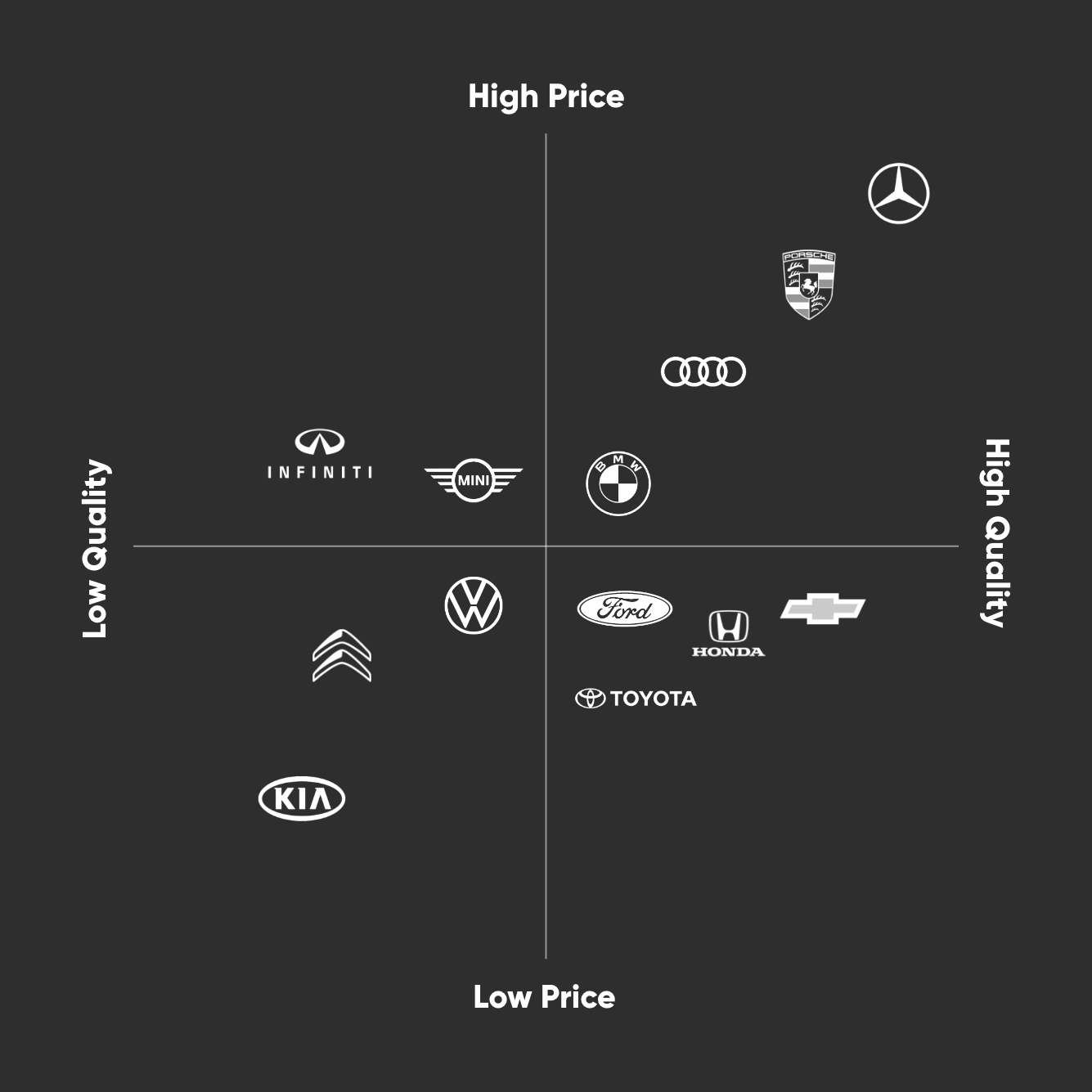
What is brand positioning and why is it important?

Take a sec and think about your favorite brands to buy from or work with. Whether in a B2C space like retail clothing or a B2B vertical like digital marketing, there is something about those brands that attracted you in the first place and then kept you coming back for years thereafter. That “something” is likely a key component of brand positioning.
Brand positioning refers to the space a brand occupies in the minds of its customers and in the context of its industry competition. And as difficult as a strong brand position can be to establish, repositioning after the fact can be just as difficult – if not more so.

Here, we’ll take a closer look at:
- Why brand positioning matters
- Some common types of brand positioning
- Some brand positioning tips to get you started
Why does brand positioning matter?
Brand positioning is important for several reasons, but primarily because of the impact it can have on the rest of your business. Brands that are presented to consumers in a consistent light see an average revenue increase of 33%, in addition to experiencing increased customer loyalty, an improved reputation, and a more relatable identity.
Taking time to build and strengthen a clear brand position puts you firmly in control of your own image and helps you differentiate yourself from your competitors, which can in turn increase brand awareness, communicate value, and justify pricing. Without a strong brand position, your business is otherwise left floating aimlessly in the industry ether with no clear reason for your target audience to buy from you.
Common types of brand positioning
There are many ways a brand can choose to position itself within its respective industry, but it’s all about finding what sets you apart in the eyes of your customers and in the context of your industry. Maybe your brand is the original in its given space. Maybe it prides itself on being the most popular option. Maybe you sell roller skates are actually reversible house slippers. Whatever the key differentiator may be, it should:
- Be true
- Resonate with your target audience
Here are a few common ways some of the most successful businesses in the world choose to position themselves.
Customer intimacy
We’ve all the seen the impact a swarm of negative reviews can have on a business. How many of us are clamoring to stay at hotels with a two-star Google rating?
In industries often plagued by poor service and inattentive support, true customer intimacy can make a world of difference and can serve as a highly effective brand position. A strong support offering can also be appealing if your products or services are difficult to implement. Brands that focus on customer intimacy and that do it well often find their patrons evolving into advocates that can then spread the word and lead to increased growth.
If customer intimacy is your chosen positioning, then it is incredibly important to walk the walk. It’s impossible to fake true customer intimacy – and if you do, your audience will eventually find out.
Operational excellence
Brands focused on operational excellence offer their customers increased convenience and ease of use – whether on a local or global scale.
Amazon is the most popular example of an operationally excellent brand, allowing consumers from anywhere in the world to order just about anything and have it arrive at their door in a couple of days. This is why Amazon is a household name and one of the most successful businesses in world history. It’s not their user interface, the quality of their products, or their level of customer service. It’s the fact that I can order roller skates on Wednesday morning and be coolest guy in the bike lane by Friday afternoon.
Operational excellence of this scale obviously takes decades and a world of resources to cultivate. Even on a local or regional scale, if you’re offering accessibility and ease-of-use in a space not known for those qualities, your customers will take notice.
Product innovation
If your service isn’t the best and you’re not that easy to use, then maybe your products are at least the most innovative in the space.
This is a positioning strategy brands like Apple and Tesla have used to climb to the top of their respective verticals, riding a longstanding history of creating and providing consumers with products no one else ever had before.
The catch, of course, is that once you position yourself as an innovator, you have to keep innovating. This grows increasingly challenging in our current era where products like smartphones are seen as outdated after only a few months. Thankfully, the same advancement that makes these products quickly “obsolete” is also what keeps driving technology forward.
Finding your brand positioning
Establishing and strengthening a well-thought-out brand positioning strategy is an in-depth process no one can entirely achieve simply by reading a blog post, but here are a few tips to help you get started down the path.
Identify and analyze top competitors
To know where you stand in your sea (or pond) of competitors, you first have to know who they are and how they are currently positioned. Understanding their positioning is critical to determining and strengthening your own. To get the ball rolling:
- Conduct searches for industry-specific keywords and see which brands rank near the top for which terms
- Talk to customers and prospects to see who else they work with, have worked with, or have considered in the past and why
- Research competitors’ websites to uncover strengths and weaknesses, strategies they’re using, and their current positioning
Find what makes you unique
At the center of your brand positioning is the jelly that makes you unique. Unfortunately, we can’t all say we have the best service and the best people. Most brands try to say this – regardless of how true it is – and because of that, the affect it has is minimal. Strong brand positioning needs to pinpoint what really sets you apart from your competitors. This is where competitive research plays an even more important role, as it can help you notice patterns in how other brands speak about themselves. Maybe a shared weakness among many is one of your greatest strengths (e.g. their roller skates can’t be worn in the house while yours are actually reversible house slippers).
Reinforce your position
Once you identify your position and have crafted a strong brand positioning statement, you need to then reinforce that statement anytime you’re talking to a current or prospective customer. Reinforcement is achieved not just by what you say, but by what you do. It’s not enough to talk about the prevailing strengths of your brand without following through. And it’s especially important your sales team is well trained in communicating these strengths and conveying them in all of their customer-facing interactions.
Find your brand’s position with Perrill
Since our conception as Minneapolis’s first digital agency in 1993, Perrill has grown into one of the most experienced and capable SEO experts in the Midwest. We use sustainable strategies, high-value keywords, and proven tactics to position you at the top of search results and make sure you say there.





